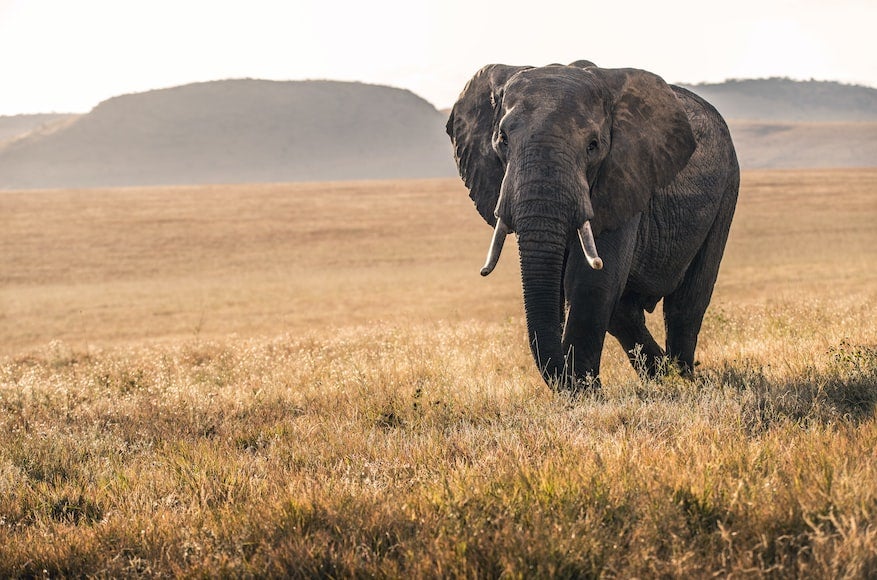Two approaches to human wildlife conflict in Zimbabwe
Hwange National Park in the north west and Gonarezhou National Park in the south east, use different methods to curb incidents of conflict with nearby communities

By Calvin Manika for Community Podium News
The past decade has seen Zimbabwean communities residing close to national parks bearing the brunt of human wildlife conflict. Dozens of villagers and communal farmers have lost livestock and crops. In addition to climate change, human-related practices have also caused conflicts.
In the Mabale area near Hwange National Park (HNP) in the north west, villagers have been losing goats and cattle to stray lions and wild animals like hyenas. Without proper methods of herding, they continue to suffer from the vagaries of human wildlife conflict.
Innocent Shoko, 54, who lost three goats from a hyena attack cannot believe how the predators got hold of the goats in the kraal and dragged them out through an opening.
“I was awakened by sounds of distress and rushed to the kraal but it was too late. All my three goats died from serious injuries sustained during the attack,” said Shoko, a Mabale villager.
Another farmer, Christopher Mwembe said wild animals also raid livestock during feeding at pastures. Without much economic activity in the area, villagers keep domestic animals, especially cattle as their store of wealth.
“The challenge is our proximity to the Hwange National Park. Our livestock gets mixed up with wild animals, causing some diseases. But the biggest threat is posed by wild animals that have a propensity to kill our livestock,” said Mwembe.
Sometimes villagers in Zimbabwe allow their livestock to graze freely without being monitored.
The animals are then rounded up in the evening and this exercise is usually assigned to children who may not account for every animal, leaving others at the mercy of predators.
However, the situation in the area surrounding Gonarezhou National Park in southern Zimbabwe, the second largest national park in Zimbabwe after Hwange, is different.
Ledson Makondo, 65, of ward 10 in Chiredzi South which borders the park, is a proud owner of more than 50 cattle. He says success came after learning from his mistakes over the years.
“We had similar challenges of wild animals preying on livestock in the past. Fortunately we were taught to practise active herding and use of effective kraals,” said Makondo.
In a bid to reduce human wildlife conflict in Chiredzi, Gonarezhou Conservation Trust (GCT), the organisation tasked with management of the park, engaged the community on ways to reduce the clashes. Human wildlife conflict is fuelling wildlife crime as locals retaliate for their losses.
Villagers in Hwange and Chiredzi identified increasing local enforcement and developing incentives for ecosystem stewardship as necessities in the fight against wildlife crime.
Chiredzi Rural District Council Vice Chairperson, Councillor Leonard Makondo said active herding has enabled villagers to boost their herd numbers and turn cattle breeding into a business, thus reducing illegal hunting which is largely responsible for the wildlife population decline in many areas around national parks.
“The success of these pathways depends on underlying enabling actions such as support for the development of institutional frameworks; building community capacity to facilitate informed best herding and kraaling practices; and strengthening commitments to sustainable resource management to increase resilience to climatic and economic shocks,” said Cllr Makondo.
“Common methods that have evolved from decades of community initiatives involve conservation awareness, development of non-wildlife based livelihoods, environmental stewardship incentives, and decreasing costs of living in proximity to wildlife. Some key considerations that emerge in community engagement are inclusivity and ownership in decision making,” said Mandla Dube, an environmentalist.
Together with opportunity and disease costs, human wildlife conflict (HWC) is another cost of conservation that is primarily shouldered by local communities and relates to tolerance to wildlife stewardship. Consequently, retaliation against wildlife responsible for HWC is quite common and has put wildlife at risk.
The high number of poaching cases in Hwange has been attributed to the lack of involvement of local people in conservation efforts. While areas near Gonarezhou have recorded positive strides in protecting livestock, Hwange villagers are increasingly recording losses that could be averted.
“The unsuccessful attempts to obstruct poaching by government entities who lack the funding, manpower, local knowledge, and access to social networks represents a critical mismatch of scale. At a local scale, communities are better equipped than centralised governments through traditional knowledge, social networks, and human resources to effectively manage their natural resources,” added Dube.
The Gonarezhou communities’ initiative of fortified kraals has reportedly reduced human wildlife conflict as well as wildlife crime. Gonarezhou Conservation Trust Community Liaison Officer Herbert Pikhela said fortified kraals are predator-proof enclosures designed to protect livestock at night.
“When used and maintained well, kraals stop livestock depredation. Their efficacy depends on effectiveness, durability, regular use, owner satisfaction, cost-efficiency, and design. Fortified kraals built by the villagers mitigated the losses,” said Phikela.
“However, kraal fortification alone does not provide a blanket solution to carnivore conflicts inAfrica. There is a need for active herding,” added Phikela.
This article is reproduced here as part of the African Conservation Journalism Programme, funded in Angola, Botswana, Mozambique, and Zimbabwe by USAID’s VukaNow: Activity. Implemented by the international conservation organization Space for Giants, it aims to expand the reach of conservation and environmental journalism in Africa, and bring more African voices into the international conservation debate. Written articles from the Mozambican and Angolan cohorts are translated from Portuguese. Broadcast stories remain in the original language.
Read the original story here:

Join our commenting forum
Join thought-provoking conversations, follow other Independent readers and see their replies